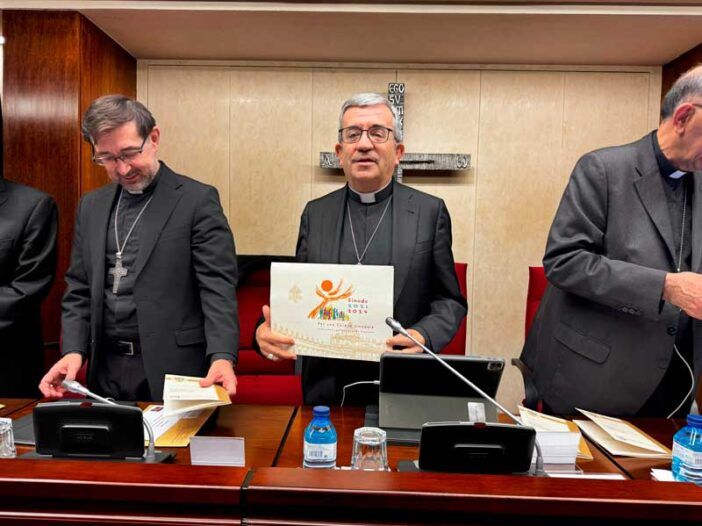St. Jerome, September 30
Priest and Doctor of the Church

His full name was Sophronius Eusebius Jerome. His hometown was Stridone, in present-day Croatia. His exact date of birth is not known, but it was around the year 347. From a well-off Christian family, he received a solid education and, supported by his parents, he perfected his studies in Rome. There he gave himself over to worldly life, letting himself be carried away by pleasures; but he soon repented, received baptism and fell in love with the contemplative life. For this reason he moved to Aquileia and became part of a community of ascetics. Some time later he left it, disappointed by the enmities that had arisen in that environment. He then left for the East and stopped in Trier, returned to Stridone and distributed again. He stayed in Antioch for a few years, where he perfected his knowledge of Greek, and then retired as a hermit in the Chalkis desert, south of Aleppo. For four years he devoted himself fully to his studies, learning Hebrew and transcribing codes and writings of the Fathers of the Church. These were years of meditation, solitude and intense reading of the Word of God, which also led him to reflect on the gap between the pagan mentality and Christian life. Embittered by the diatribes of the anchorites caused by the Arian doctrine, he returned to Antioch. In 379 he was ordained a priest, and then moved to Constantinople, where he continued to study Greek with St. Gregory of Nazianzus.
At the side of Pope Damasus
In 382 Jerome returned to Rome to participate in a meeting called by Pope Damasus on the schism of Antioch. Since his ascetic and erudite reputation was well known, the Pontiff chose him as his secretary and advisor and invited him to make a new translation of the biblical texts into Latin. In the capital, Jerome also founded a biblical circle and initiated the study of Scripture by women of the Roman nobility who, wishing to undertake the path of Christian perfection and wishing to deepen their knowledge of the Word of God, appointed him as their teacher and spiritual guide. Since the strict rules he suggested to his disciples were considered too harsh, it is understandable why his moral rigor was not shared by that type of overly lax clergy. Jerome was also not well regarded by many others because of his aggressive ways and his difficult character. In addition, he rigorously condemned vices, hypocrisies and often polemicized with the wise and learned. In these contrasting conditions, when Damasus died, he decided to return to the East and in August 385 he embarked from Ostia to reach the Holy Land, accompanied by some of his faithful monks and a group of his followers, including the noble Paula with her daughter Eustochia. He embarked on a pilgrimage, reached Egypt and then stopped in Bethlehem, where he opened a school that offered his teaching free of charge. Thanks to Paula’s generosity, he built a male monastery, a female one and a hospice for travelers visiting the holy places.
The retreat in Bethlehem
Jerome spent the rest of his life in Bethlehem, always devoting himself to the Word of God, to the defense of the faith, to the teaching of classical and Christian culture and to the reception of pilgrims. An impetuous man, often controversial and quarrelsome, he was hated but also much loved. It was not easy to talk to him; However, he left a great legacy to Christianity with his life’s testimony and his writings. We owe to him the first translation of the Bible into Latin, the so-called Vulgate – with the Gospels translated from Greek and the Old Testament from Hebrew – which even today, in its revised version, remains the official text of the Latin Church. The Word of God, so studied and commented on, was also “committed to be lived concretely”, said Benedict XVI, who dedicated two catecheses to Jerome at the general audiences of 7 and 14 November 2007. He died in his cell, near the Grotto of the Nativity, on 30 September, probably in 420.
His teachings and works
“What can we learn from St. Jerome? It seems to me that above all this: to love the Word of God in Holy Scripture – suggested Benedict XVI – it is important that every Christian lives in personal contact and dialogue with the Word of God, which is given to us in Holy Scripture… it is also a Word that builds the community, that builds the Church. Therefore, we must read it in communion with the living Church.” Jerome is one of the four Fathers of the Western Church (along with Ambrose, Augustine and Gregory the Great), proclaimed Doctor of the Church in 1567 by Pius V. His legacy has been left to us by his commentaries, homilies, letters, treatises, historiographical and hagiographical works; his De Viris Illustribus is well known, with the biographies of 135 authors, mostly Christians, but also Jews and pagans, to show how Christian culture was “a true culture worthy of comparison with the classical one.” We must not forget his Chronicle (Chronicon) – the translation and reworking in Latin of the Greek Chronicle of Eusebius of Caesarea, now lost – which contains the narrative of universal history, where historical data is mixed with myths, starting from the birth of Abraham until the year 325. Finally, rich in sincere teachings and advice, we have many epistles that reveal his profound spirituality.
Related

Bishop Luis Argüello Addresses the Challenges of the Church in Spain
Exaudi Staff
01 April, 2025
2 min

THE WAY OF THE CROSS: Accompanying Jesus on the way to the Cross
Luis Herrera Campo
31 March, 2025
5 min

Mother Carmen Rendiles, the first Venezuelan saint proclaimed by the Universal Catholic Church
Exaudi Staff
31 March, 2025
3 min

The International Academy of Catholic Leaders: Renewal and Commitment to its Mission
Exaudi Staff
30 March, 2025
4 min
 (EN)
(EN)
 (ES)
(ES)
 (IT)
(IT)

